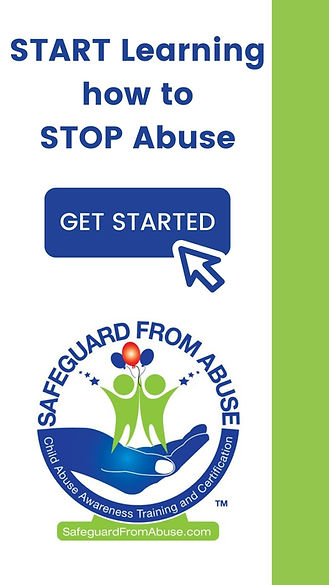Who does a child abuser look like?
Anyone and Everyone
April is National Child Abuse Prevention Month
This annual observance calls all of us to focus proactively on a serious and prolific problem that often hides in the shadows:
-
One in four girls and one in seven boys have been sexually abused.
-
The average abuser has an average of 117 victims.
-
93% of victims know their abuser.
In order to prevent child abuse, adults must be able to recognize it before it happens. We must stop believing that abuse is something that happens elsewhere. Otherwise, we’ll be too trusting and won’t take the time to learn how to identify areas of risk for those in our care.

Who does an abuser look like?
If you’re picturing a dubious-looking person of a specific gender or age, you’re already off-track. While it’s true that the most common offender type is a caucasian male in his mid-thirties, abuse infiltrates every gender and socioeconomic status. Even age isn’t a predictable criteria, as children can themselves be abusers of younger or smaller children.
An abuser could be the fun dad, the kindly grandpa, the active mom, the helpful teenager, the caring pastor, the encouraging coach, or the dedicated teacher.
What does abuse look like?
Abuse takes many forms, including verbal, physical, emotional/psychological, and sexual. The most common form of abuse is simply neglecting to protect a child or provide for their needs, which can happen in dozens or even hundreds of ways.
Yelling or swearing at children and public shaming are easily observable forms of verbal and emotional abuse. Hitting, tripping or punching would be noticeable forms of physical abuse. Of course, you wouldn’t tolerate any of that. But many acts of abuse are easy to hide and can occur within groups or in plain sight of others, without necessarily catching anyone’s attention.

Because children do not always realize they’re being abused or have been threatened with further harm or harm to someone they know if they tell, we cannot depend on children to always report abuse. The damage from abuse is often devastating, so we cannot turn a blind eye or bury our heads in the sand. Adults must be their advocates!
Abusers are very good at what they do. It’s one reason an estimated 95% have not been arrested yet. They are chameleons. They could be anyone and abuse can occur anywhere.
What can I do?
If the majority of predators haven’t been caught, it’s easy to simply become suspicious and distrustful of everyone, constantly worried about the children in your care every moment. Fear of the unthinkable happening on your watch may keep you up at night, but this approach doesn’t protect children. Crossing your fingers and hoping for the best won’t protect our most vulnerable population.
The answer is knowledge.
Being trained in what to look for provides confidence, allowing you to rest easier, but most importantly, it detracts abusers. Predators are attracted to environments that make abuse easy.
Organizations with strong child-protection policies and zero tolerance for abuse automatically discourage abusers up front.
Youth-serving organizations need to be educated about:
-
Types of abuse and behaviors that qualify as abuse
-
Profiles of abusers and potential warning signs (including being charming and well-liked)
-
The types of roles predators seek out
-
Policies and guidelines to put in place
-
Recognizing abusive or pre-abuse behaviors (i.e. grooming, the predatory act of maneuvering a child into a position that provides an opportunity for abuse. )
-
Recognizing symptoms of abuse in children
-
Actions to take if abuse is suspected
-
How to help a child feel safe about telling the truth
-
Legal responsibilities of every organization
-
Specific roles required to report suspected abuse
Child abuse is a preventable problem. Every child should have a happy, healthy childhood. Every adult must play a role in creating safe, stable, nurturing environments required for the healthy development of future generations of parents, leaders, and community members.
Educating yourself and your organization has never been easier.
In honor of National Child Prevention month, Safeguard From Abuse makes it more convenient than ever to prevent tragedy from striking.
CHILD ABUSE PREVENTION TRAINING & CERTIFICATION
Our child abuse prevention training is the most current, comprehensive, and engaging video training available and, for a limited time, it’s 10% off!
-
75-minute Child Abuse Awareness online training
-
11-minute Basic First Aid training
-
Facilitator dashboard & compliance reports
-
Invite your team to self-register
-
Available 24/7
-
Certificate awarded with a test score of 80% or better
-
Multiple pricing levels
-
Pre-pay or credit cards accepted from trainees


